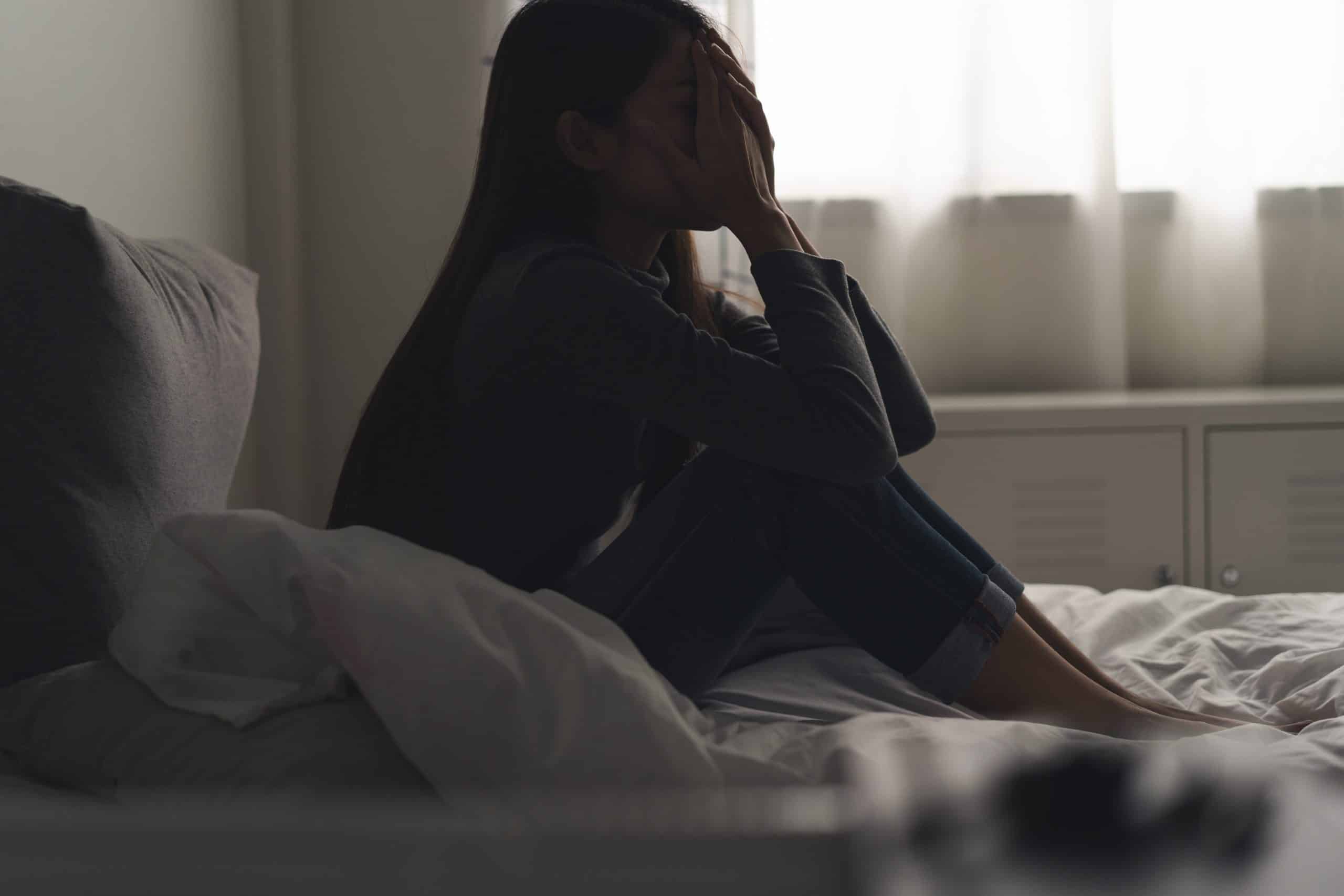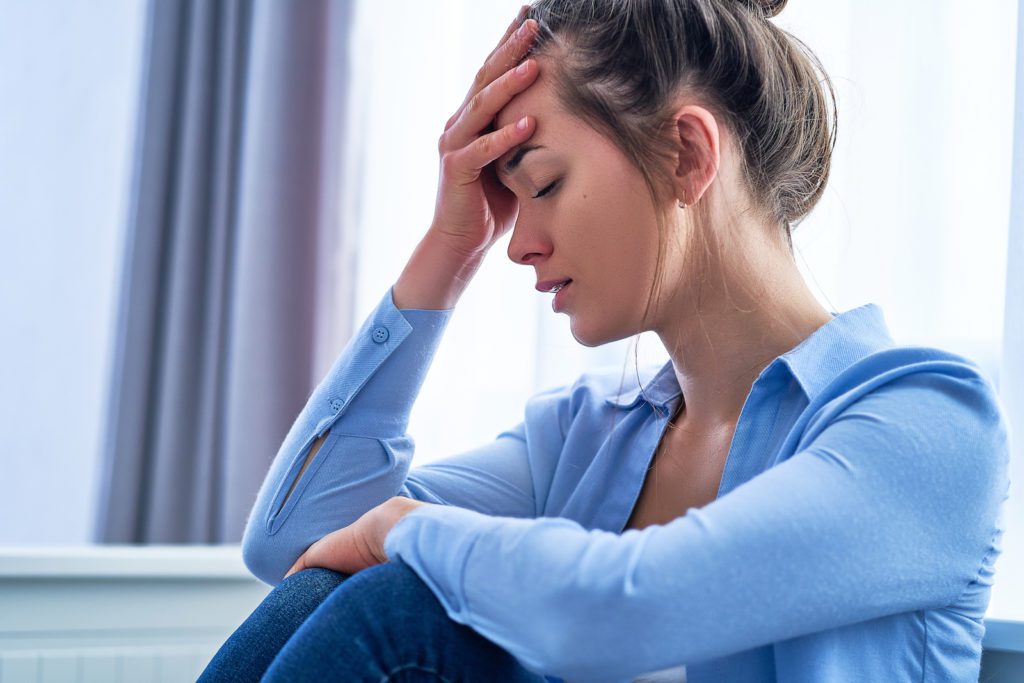
Table of Contents
Codeine is a common painkiller that’s often added to cough syrups because it can help suppress the need to cough, while other medicines and active ingredients address the source of respiratory irritation.
Parents will probably be familiar with cough syrup with codeine since most parents will have been given a prescription for it when their children have a rough cold or a stubborn cough and need relief.
Codeine can also be used as a treatment for mild to moderate pain and may be prescribed in tablet form to help with pain when over-the-counter alternatives aren’t managing your symptoms.
The problem is that, despite seeming like an innocent and common medication, codeine is an opioid that is more powerful and addictive than most people think.
Like all opioids, one of the problems is that your body can develop a tolerance to codeine over time, which might lead to you taking more codeine than is recommended.
Unfortunately, like other opioids, some people will have withdrawal symptoms after taking as little as a single dose of codeine. Since withdrawal symptoms are often similar to those that made you take codeine in the first place, it can be hard to tell when you’ve developed a chemical dependence on the drug and are at greater risk of developing an addiction.
Additionally, the mild high you can get from Codeine and the relaxed feeling that some users report has also led to some people taking codeine recreationally, which is both illegal and dangerous.
Codeine can also be used in manufacturing other, even more, dangerous drugs, but we’re going to focus primarily on Codeine itself in this article.
If you want to learn more about codeine addiction, withdrawal, and how long it takes to get through withdrawal after codeine use, you’re in the right place.
Codeine Withdrawal Symptoms & Side-Effects
Codeine withdrawal will kick in shortly after you stop taking codeine. It can start within as little as a few hours after your last dose, as soon as the last drug is either used or eliminated from your system.
It’s common for there to be two phases of codeine withdrawal, and they can have different symptoms in each phase. We’ll talk a bit more about the timeline of codeine withdrawal in the next section.
Don’t worry if you’ve only taken codeine as prescribed. You may not have withdrawal symptoms at all; even if you have them, they should be mild and manageable. However, if you have developed a chemical dependence and withdrawal is uncomfortable or intolerable, talk with your doctor, and they should be able to give you options to help manage the worst symptoms.
Withdrawal management is usually only needed in cases of severe dependence or addiction. Methadone, a drug used to ease the withdrawal pangs of people with opioid dependence, can be used to avoid the worst withdrawal symptoms. Still, you’ll need to either continue taking methadone as a maintenance medication, or slowly decrease your dose to avoid dependence on methadone instead of codeine.
Early symptoms of codeine withdrawal include:
- Anxiety
- Muscle tension
- Sweating
- Runny nose
- Teary eyes
- Insomnia
- Irritability
- Intense cravings
- Frequent yawning
- Faster heart rate
Later on, when you reach the second phase of withdrawal, symptoms include:
- Loss of appetite
- Nausea
- Vomiting
- Enlarged pupils
- Chills, usually without fever
- Goosebumps
- Diarrhea
- Stomach cramps
The symptoms in the second withdrawal phase may be combined with symptoms from the first phase.
The symptoms in the second withdrawal phase are usually more severe and dangerous than in the first phase. Medical emergencies like heart trouble, trouble breathing, and seizures are incredibly rare, but they are a medical emergency if they happen, and you or your friends or loved ones will need to call 911 for help right away.
The biggest risk during codeine withdrawal is electrolyte imbalances and dehydration. Both problems can lead to kidney trouble and are often responsible for seizures and other more serious complications.
Dehydration is a problem because your body needs a certain amount of water to function, and without it, you’ll have more toxins building up than your kidneys would normally eliminate. Normally your body can tolerate mild dehydration without too many issues, but combined with withdrawal symptoms and it can be a serious stress.
Electrolytes, sodium, potassium, and other vitamins, minerals, and sugars are just as important as getting enough water. Your body can’t process water as well without them, and you can actually be drinking water and still dehydrated if you don’t have enough electrolytes.
That’s because electrolytes help your cells grab water through osmosis, and electrolytes are also critical for maintaining the right amount of blood plasma for good circulation and oxygen and nutrient delivery.
If you aren’t sure how to keep your electrolytes up, you can talk with your doctor before you detox for more tips and information. Coconut water, fruits, Gatorade, and other electrolyte supplements can all be good tools for maintaining electrolyte balance.
Codeine Withdrawal Symptoms Timeline
Knowing how long you can expect withdrawal symptoms to last can help you know what to expect, and can help with the management.
Because codeine can have an extended withdrawal period, it’s often a good idea to enroll in a treatment program or work closely with medical care providers to manage your symptoms. While it’s rare for codeine withdrawal to have truly dangerous symptoms, some side effects make it easy to get dehydrated and exhausted, which can be dangerous if you don’t know how to deal with it.
At the very least, it’s important to have friends and family who can help you through the first week or so of your withdrawal, preferably with medical support or the option of switching to a medical situation if they aren’t able to help as much as you need or your symptoms get worse than expected.
Remember, withdrawal is when most people addicted to codeine will have the hardest time. It can feel like withdrawal won’t end and you need the codeine to get through it.
Remember that withdrawal will eventually improve and that you don’t need codeine during or after withdrawal.
Come back to this withdrawal timeline often as you need for reminders of what you can expect, and when you can expect it.
The First Few Hours
You’ll typically feel okay for the first few hours after your last dose. You might notice a little bit of a runny nose or insomnia, but you may start to notice more symptoms around 7-8 hours after your last dose.
It’s a good idea to time things so you can sleep after your last dose since insomnia is a common early symptom.
The Next 48-72 hours
After the last codeine has left your system, you’ll likely notice some muscle tension and anxiety and may start craving food or specific beverages.
It’s okay to indulge those cravings right now, j. Just remember that nausea and stomach cramps are common next symptoms, and try to moderate how much you eat and get plenty of liquids.
A runny nose, headache, and irritabilities are also expected.
If you start sweating, don’t worry, that’s normal. Drink more water, juice, and other electrolyte drinks like Gatorade to help your body stay hydrated.
72 Hours from Last Dose to the End Of The First Week
Some people who get a milder version of withdrawal may start to feel better around the 72-hour mark, or even sooner in some cases. However, if you’ve been addicted to codeine, taking large doses, or using codeine for a long time, it may take longer, and you’ll enter part two of withdrawal.
This phase is usually more intense; some people can have occasional withdrawal symptoms or intense cravings for up to 6 months after their last dose.
In the second phase withdrawal phase, you may have stomach cramps and nausea, followed by a lack of appetite and low interest in both food and beverages. You should ensure you’re still drinking as much juice, Gatorade, and water as possible. Use juice and Gatorade to maintain electrolytes, supplement water, or stay hydrated when flavored beverages are too much for your stomach.
Chills, goosebumps, and hot and cold flashes can happen. Plan on wearing loose, comfortable clothing, and use blankets and pillows when you get cold.
Sweating may also get worse in this phase. It’s a good idea to have a few changes of clothing, and easy hygiene supplies like facial wipes, washcloths, and dry shampoo available if showering is too much for you to handle in this phase.
How To Detox From Codeine Safely & Mitigate The Symptoms Of Withdrawal
Withdrawal from any drug can be difficult and uncomfortable. The good news is that serious complications from opioid withdrawal are relatively rare.
However, if symptoms become intense, or you can’t keep fluids down, it’s probably time to seek medical help. IV fluids may be easier to tolerate than oral fluids, and your doctors may be able to use medications to ease your worst symptoms and address your withdrawal with medicines that are similar to, but not exactly like codeine.
If you’ve tried a detox before, and either failed or relapsed, it’s a good idea to seek medical help from the beginning. Your primary care doctor might be able to recommend some options for home withdrawal, but most likely, a treatment center that can provide 24/7 care and monitoring will be a better option.
Treatment centers can also help you after withdrawal. Group and individual counseling can help you identify why you became addicted in the first place, along with developing healthier coping mechanisms and learning your unique triggers.
If you’re looking for a treatment center experienced in working with people in codeine and other opioid withdrawal or have more questions about what treatment looks like, you can always call Ocean Recovery.
Our team will be able to answer all your questions, either about your addiction, or questions about a loved one’s addiction, explain our intake process, and even help you get started if it’s time to overcome codeine addiction once and for all.
No matter what, remember, there is always hope for a better, drug-free future, and you deserve the support you need to get there. Ocean Recovery is here to help.
Sources:
Ocean Recovery has sourcing guidelines and relies on peer-reviewed studies, academic research institutions, and medical associations for our references. We avoid using tertiary references as our sources. You can learn more about how we source our references by reading our editorial policy.
- Case-Lo C. Codeine Withdrawal: Symptoms, Treatment, and More. Healthline. Published May 5, 2022. Accessed August 9, 2022. https://www.healthline.com/health/codeine-withdrawal
- WHO. Withdrawal Management. World Health Organization; 2009. Accessed August 9, 2022. https://www.ncbi.nlm.nih.gov/books/NBK310652/
- Whelan C. Electrolytes Food: 25 Foods for Electrolyte Function and More. Healthline. Published May 13, 2019. Accessed August 9, 2022. https://www.healthline.com/health/fitness-nutrition/electrolytes-food






